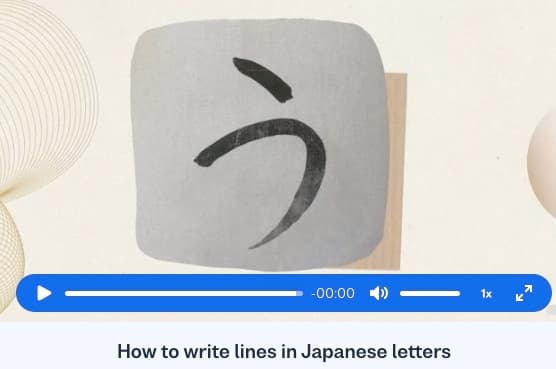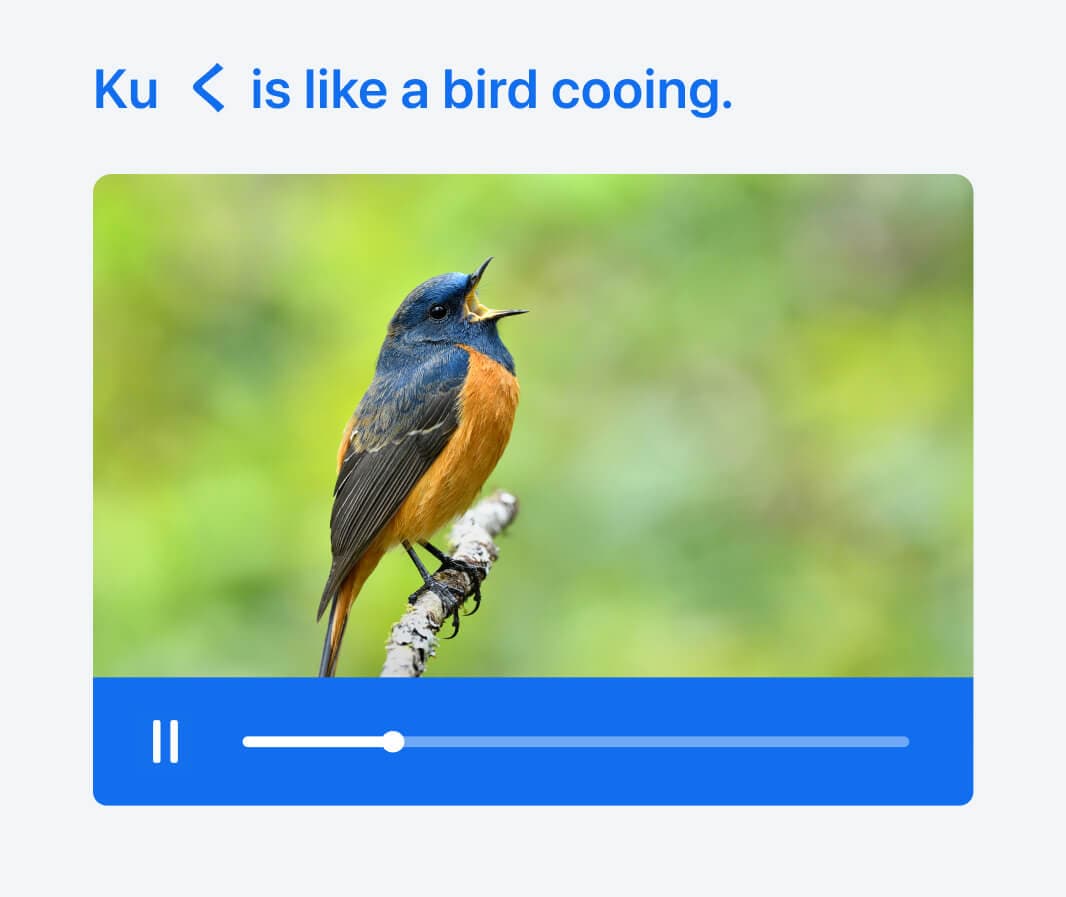I want to learn...
If you’re thinking about learning Japanese, the Japanese alphabet is a great place to start. And you’ve come to the right place to learn all about it! Today, we’ll teach you how to start reading and writing in Japanese.
But first off, is there a Japanese alphabet?
Well, not exactly. The Japanese alphabet is really three writing systems that work together. These three systems are called hiragana, katakana and kanji.
If that sounds overwhelming, don’t worry! Hiragana and katakana are easy enough to learn – and will be a big help if you're thinking about travelling to Japan, or learning basic Japanese. Learning kanji is a little trickier, but we'll come to that later.
Worth noting: Romaji isn't one of the Japanese writing systems. It's the Roman alphabetisation of the Japanese language. It can be helpful in some situations, though romaji isn't a reliable substitute for hiragana, katakana or kanji – but that's a story for another day.
Hiragana and Katakana, explained
Hiragana and katakana are two different ways to write the same set of 46 sounds. They’re the closest the Japanese language has to an alphabet. The primary difference between this kind of writing system – technically a 'syllabary' – and an 'alphabet'? Characters generally represent a whole sound (like ‘ki’ or ‘ra’), rather than individual letters (like ‘k’ or ‘r’).
Usually, we write native Japanese words using hiragana, while katakana is used for words borrowed from other languages.
So, for example, arigatou, Japanese for “ thank you ”, is typically written ありがとう (a ri ga to u) using hiragana characters, whereas “America” is written アメリカ (a me ri ka) using katakana.
But that'll make more sense once we dive in. And we’ll give you a hiragana chart and a katakana chart along the way to help you learn.
Japanese writing system
There are 3 Japanese writing systems: Hiragana, Katakana, and Kanji. Below is more information on each Japanese writing system to guide you:
1. Hiragana (and our Hiragana chart)
Hiragana is the backbone to all Japanese learning. It helps you learn the basics of pronunciation in Japanese and start to understand the building blocks of the language.
Hiragana characters represent the 46 primary sounds used in Japanese, and are usually used to write words that are originally Japanese. We organize them by the consonant they start with and the vowel that follows.
For vowel order, in learning Japanese, we use a (ah), i (ee), u (oo), e (eh), o (oh).
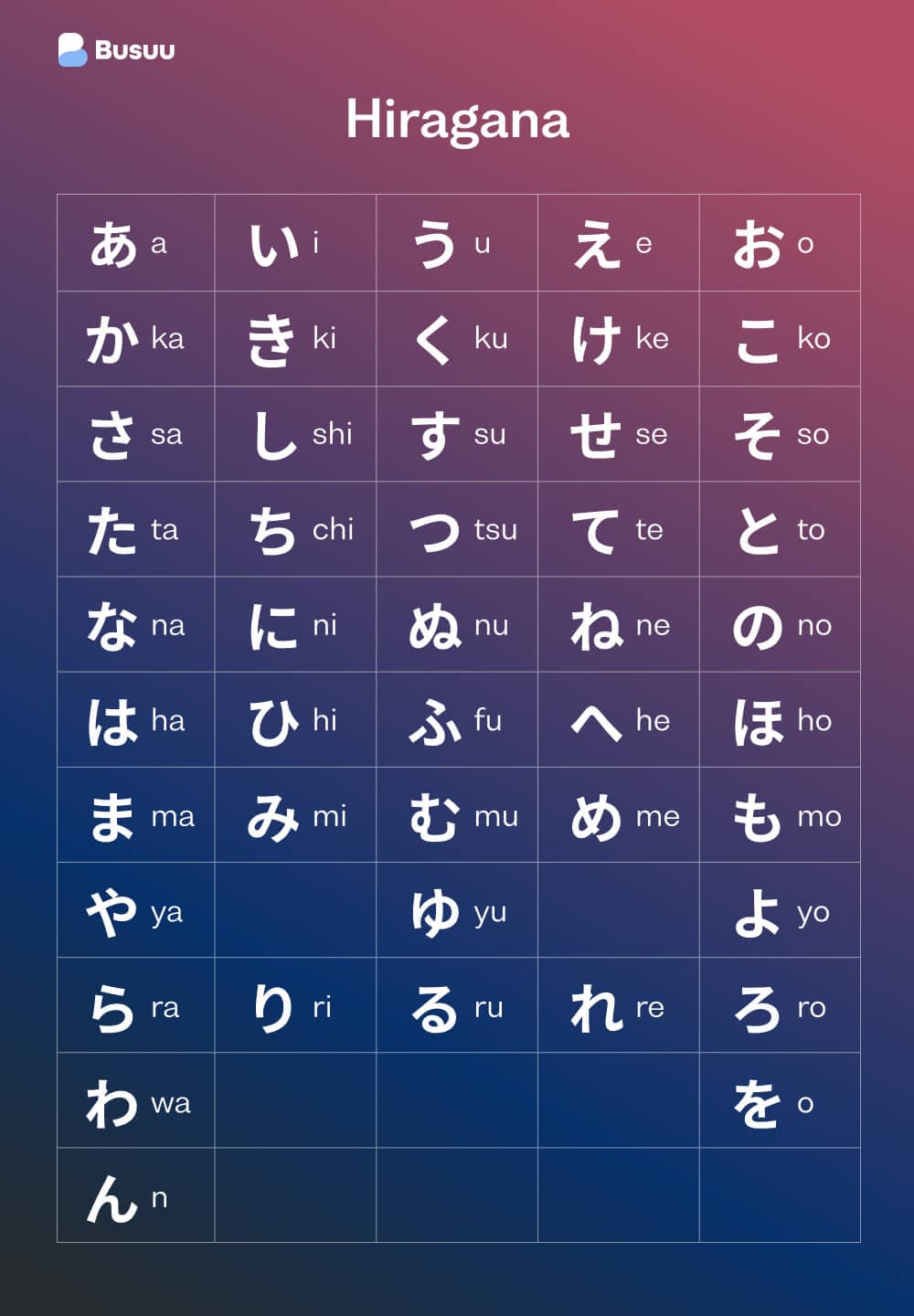
Feeling overwhelmed? Don’t fret!
At Busuu, we use images to help you remember the shapes of the characters, and what sound they correspond to: Pretty ku-ool, right? With visual aids like this, free courses on each writing system, and a complete course for beginners, Busuu makes it easy to learn Japanese in just 10 minutes a day.
2. Katakana (and a handy Katakana chart)
Conveniently, the katakana character set covers the same sounds as hiragana. Some of the characters even look a bit similar, like ‘mo’ – も and モ – and ‘ya’ – や and ヤ.
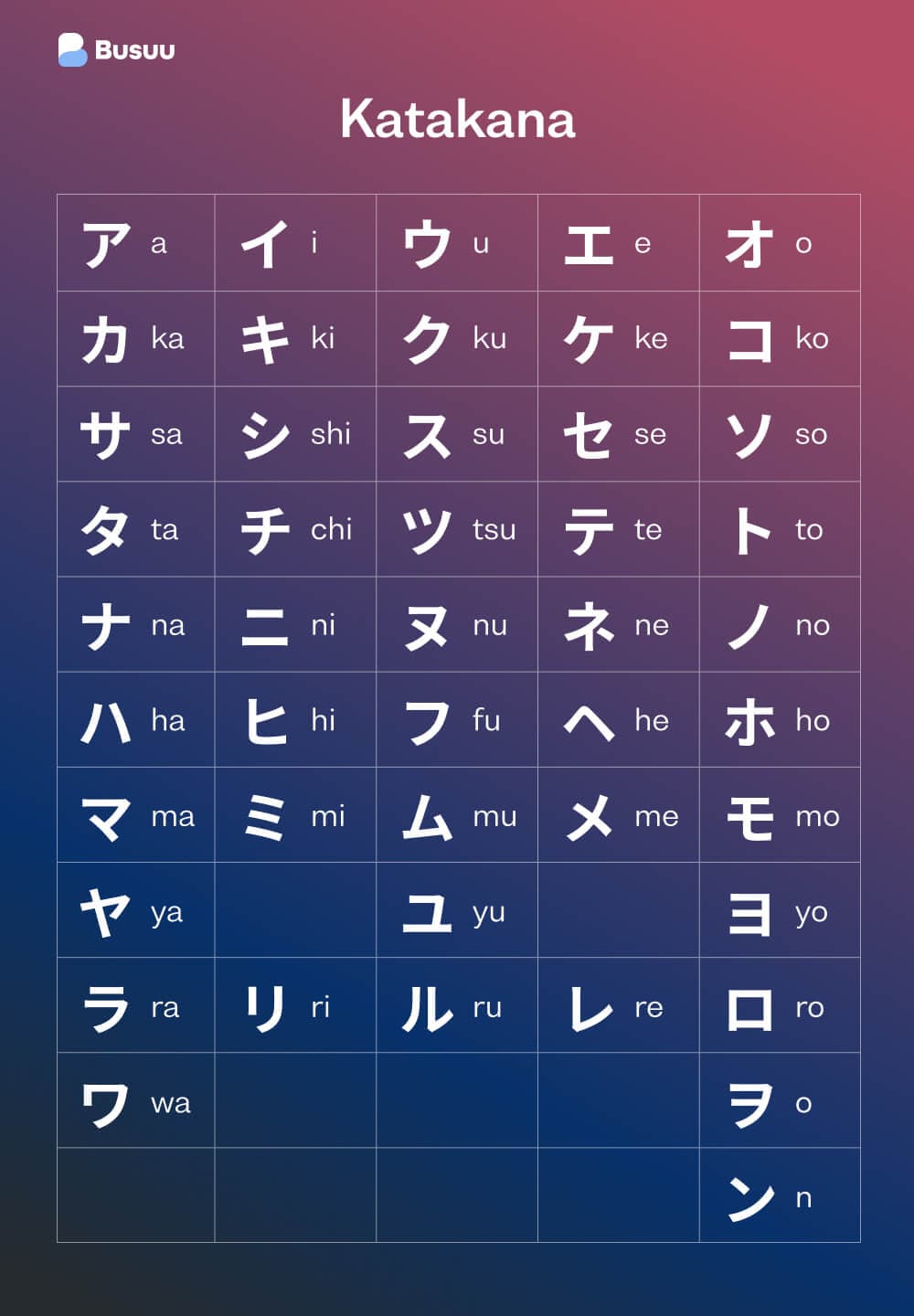
Fun fact: to say ‘two’ in Japanese, we say ‘ni’. The number is typically written using the kanji ‘ニ’ which you may notice is the same as the katakana character for ‘ni’. So now you know one way to say and write ‘two’ in Japanese, your first of the Japanese numbers!
But wait, there’s more: Dakuten, handakuten and beyond
Maybe you’ve noticed that there seem to be some sounds missing from these katakana and hiragana charts that you know are used in Japanese. After all, how do you get gyoza and Pikachu without gyo, za, pi, or chu?
To make these sounds, you don’t need to learn more characters, but you do need to know about modifying and combining them. Here’s how modifications look:
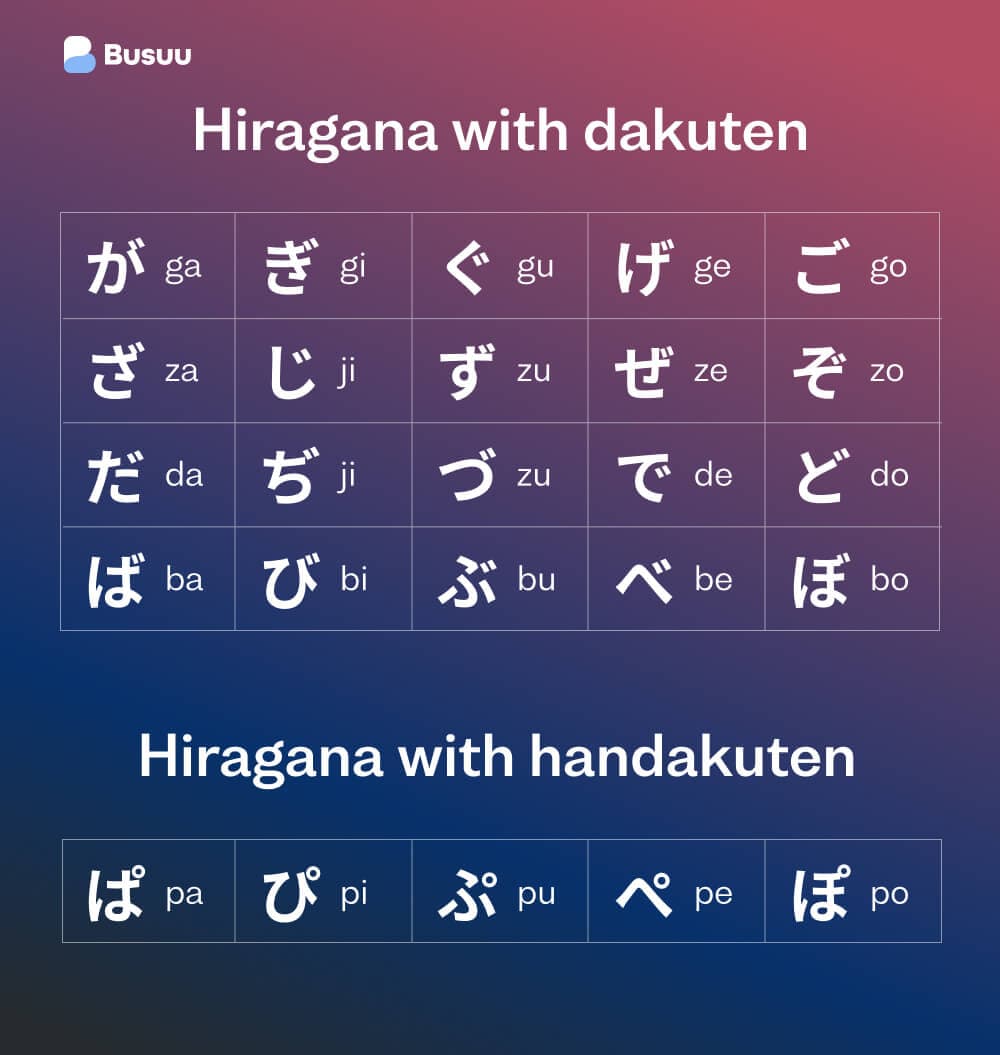
And for combinations, we use smaller versions of the y-vowels ya (や), yu (ゆ), and yo (よ) to make new sounds, like sha (しゃ), chu (ちゅ), nyu (にゅ), and gyo (ぎょ). So spelling out gyoza in hiragana is actually a great example of both modifications and combinations in action – ぎょうざ.
And with that, you have all of the primary sounds made in Japanese! There are other little things like long vowels and hard stops, but those you can save for when you’ve learned a bit more.
Which brings us to the last of the three Japanese writing systems: Kanji.
3. Kanji
The first thing you need to know is that, unlike katakana and hiragana, kanji aren’t always characters you put together to make sounds and words. A single kanji can be one word.
Kanji are symbols that mean a whole word or idea. Many of them were borrowed from Chinese characters at different times over the past several centuries, so if you read and write Mandarin Chinese, you’ll have a leg up!
Worth noting: Hiragana and katakana are frequently used to tell you what a kanji says, or how to pronounce it. For example, you might see these characters on menus, or even in episode titles for TV shows. This serves a double purpose: it can help foreigners and Japanese people alike, because there are many more kanji than most people – even Japanese people – ever learn.We won’t be able to teach you kanji with a handy chart – after all, there are over 6,000 kanji! But learning 1000 kanji will let you read about 95% of written Japanese materials.
And, fortunately, we can learn kanji, too, using images to help us. Take a look:

Big
(“dai”, “oo-kii”)

Child
(“shi”, “ko”)

Father
(“fu”, “chichi”)
Good to know: There are usually two or more ways of reading any one kanji – these are categorised as onyomi (Chinese origin) and kunyomi (Japanese origin) readings. So ‘fu’ is the onyomi for 父 while ‘chichi’ is the kunyomi reading. This is because of the complicated history of kanji, and you’ll just have to get Busuu if you want to learn more!
Learning kanji is definitely the hardest part of learning Japanese. But they’re nothing to be scared of. The more kanji you learn, the easier it becomes. And look – you already know your first three!
Newlanguages

